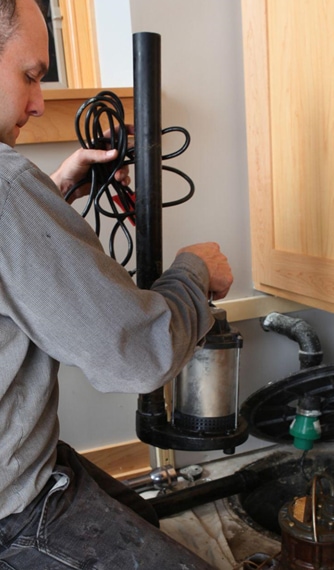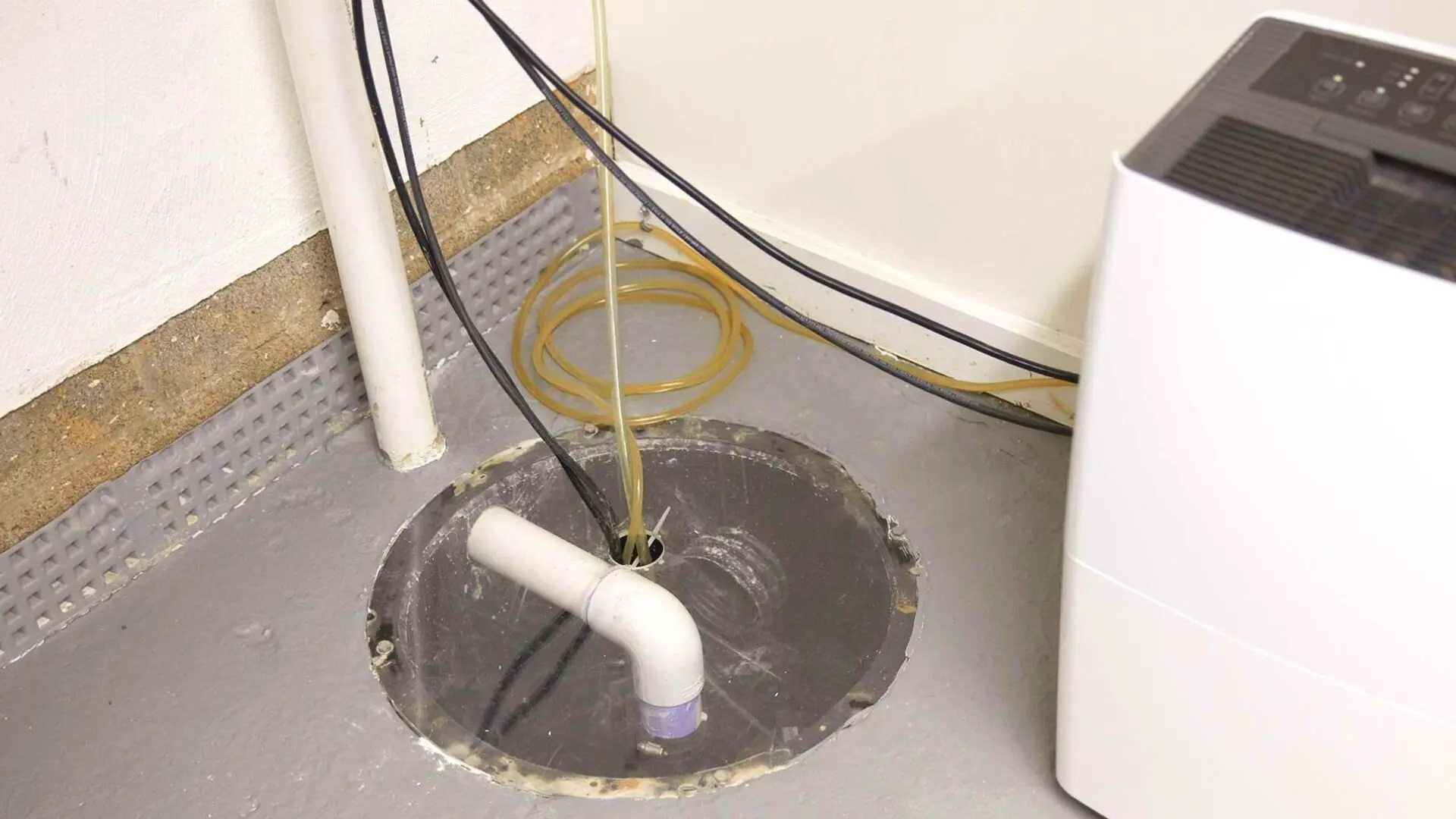An Definitive Guide to Servicing a Sump Pump
An Definitive Guide to Servicing a Sump Pump
Blog Article
What are your thoughts and feelings on How To Effectively Clean A Sump Pump?

Sump pumps are important parts in many homes, particularly in areas prone to flooding or extreme dampness. They help protect against water damages by successfully getting rid of excess water from basements or crawl spaces. Nonetheless, like any other device, sump pumps call for regular upkeep to ensure they work properly when required one of the most. Cleaning your sump pump is a crucial part of its upkeep, and comprehending exactly how to do it appropriately can conserve you from costly repair services and prospective calamities.
Introduction
Keeping a clean sump pump is vital for its proper performance and long life. Overlooking this essential job can bring about blockages, malfunctions, and ultimately, water damage to your residential or commercial property. Therefore, discovering how to clean a sump pump is important for property owners who count on these devices to keep their cellars dry and secured.
Recognizing the Sump Pump
Before diving right into the cleaning process, it's essential to have a fundamental understanding of exactly how a sump pump functions. Generally set up in a pit or container below the cellar flooring, a sump pump consists of several key parts, consisting of a pump, a float switch, and a discharge pipeline. When water gathers in the pit, the float button turns on the pump, which then pumps the water out with the discharge pipe, away from the structure's foundation.
Signs of a Dirty Sump Pump
Recognizing when your sump pump needs cleansing is essential for avoiding potential breakdowns. Some common indicators that show a filthy sump pump include strange noises throughout operation, reduced water circulation, and noticeable debris in the pit. If you see any of these symptoms, it's important to cleanse your sump pump immediately to avoid any further problems.
Preparing for Cleaning
Before you begin cleansing your sump pump, it's necessary to take some security preventative measures. Start by shutting off the power to the pump to prevent any electric accidents. In addition, wear proper safety equipment, such as handwear covers and goggles, to shield yourself from dirt, particles, and potential virus.
Step-by-step Overview to Cleaning Up a Sump Pump
Turning off the Power
Begin by separating the power supply to the sump pump to stop any crashes while cleaning.
Removing Debris and Dirt
Utilize a container or a scoop to get rid of any type of visible particles, dirt, or debris from the sump pit. Dispose of the particles effectively to stop it from clogging the pump or the discharge pipeline.
Cleansing the Pump and Float Switch
As soon as the pit is clear of debris, meticulously eliminate the pump from the pit. Check the pump and the float button for any kind of signs of damage or wear. Utilize a soft brush or cloth to clean the surfaces and get rid of any collected grime.
Flushing the System
After cleansing the pump and float button, flush the sump pit with clean water to remove any type of staying dirt or debris. This will help make sure that the pump runs smoothly and efficiently.
Checking for Proper Functioning
Before re-installing the pump, do a quick test to ensure that the float button triggers the pump correctly. Pour some water right into the sump pit and observe the pump's operation. If whatever is functioning correctly, you can reassemble the pump and reconnect the power supply.
Upkeep Tips to Keep Your Sump Pump Clean
In addition to regular cleansing, there are several upkeep tips you can follow to keep your sump pump in ideal problem:
Conclusion
Cleansing your sump pump is an essential aspect of its maintenance and ensures that it runs efficiently when you require it the most. By adhering to the steps described in this guide and including regular maintenance right into your routine, you can expand the life-span of your sump pump and shield your home from water damages.
6 STEPS ON HOW TO CLEAN A SUMP PUMP PROPERLY
UNDERSTANDING SUMP PUMPS
Your sump pump plays a crucial role in protecting your home by managing and removing excess water. It primarily functions as a “shield”, guarding your basement against the damaging effects of water accumulation. The pump is housed in a sump pit in the lowest part of your basement, and its job is to pump out any water that collects there.
During heavy rainfalls or when snow melts rapidly, water can infiltrate your basement, posing potential risks like flooding, structural damage, and harmful mold growth. Here, the sump pump springs into action, pumping out the intruding water and directing it away from your home.
SAFETY FIRST
Before cleaning, remember to prioritize safety. Disconnect the sump pump from the power source to prevent any accidental electric shocks. Also, wear sturdy gloves to protect your hands from any sharp or dirty components within the pump.
REMOVE THE SUMP PUMP
After ensuring your safety, the next step is to remove the sump pump from its pit. Doing this might require careful maneuvering as you don’t want to damage any pump components. Once removed, clean the sump pit to remove any accumulated debris or sludge.
INSPECT THE PUMP
Inspect the pump for any visible signs of wear or damage. Check the power cord, float switch, and impeller housing. If any components look worn out or damaged, consider replacing them to ensure optimal performance.
CLEAN THE PUMP
Thoroughly clean the pump with warm, soapy water. Make sure to rid it of any dirt, gravel, or other debris that might impede its performance. You can use a toothbrush to clean the small, hard-to-reach parts of the pump.
REINSTALL THE SUMP PUMP
Reinstall the pump into the sump pit Make sure it’s positioned correctly to remove the water effectively Once it’s back in place, reconnect it to the power source TEST THE PUMP
Finally, pour some water into the pit to ensure the pump works correctly. It should start automatically and begin pumping out the water; if it doesn’t, check the power source and the positioning of the pump.
Remember, while cleaning your sump pump is an essential part of home maintenance, hiring a professional plumber for a thorough inspection and cleaning at least once a year is also important. This will ensure that your pump is in optimal condition, ready to protect your home from potential water damage.
BEST PRACTICES FOR CLEANING SUMP PUMP DISCHARGE PIPES
Regular Inspection: Regularly inspect your discharge pipes, especially during heavy rainfall or snowmelt periods. Look for any signs of blockage or damage. Early detection of problems can prevent serious issues down the line. Periodic Cleaning: Over time, sediment and debris can accumulate in the discharge pipes, impeding the flow of water. Regular cleaning helps keep the pipes clear and functioning efficiently. You can use a high-pressure water jet to effectively clean the pipes. Insulation During Winter: In colder climates, discharge pipes can freeze, blocking the outflow of water. Protect your discharge pipes from freezing temperatures by insulating them with foam pipe insulation. This will ensure the sump pump can continue to discharge water even in freezing conditions. Proper Positioning: The discharge pipe should be positioned to direct water away from your home’s foundation. Improper positioning can lead to water seeping back into the basement. Ensure the pipe is long enough and angled correctly. Installation of a Check Valve: A check valve prevents water from flowing back into your sump pit after the pump has pushed it out. Installing a check valve helps maintain the efficiency of your sump pump and reduces the risk of flooding. Minimize Pipe Turns: Every curve or turn in the discharge pipe can decrease the efficiency of water flow. By minimizing turns and bends in your discharge pipe, you can increase the efficiency of your sump pump. https://www.fullspeedplumbing.com/how-to-clean-a-sump-pump-properly9999/

Do you like reading up on ? Place a remark below. We'd be glad to find out your responses about this entry. In hopes to see you back again later on. In case you enjoyed our blog entry plz consider to pass it around. Many thanks for your time invested reading it.
Get Quote Now Report this page